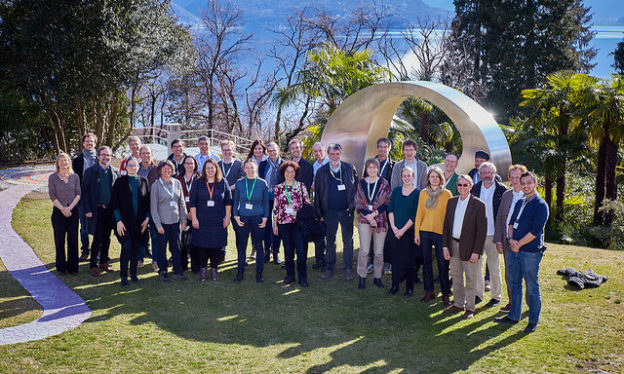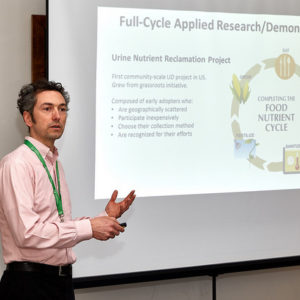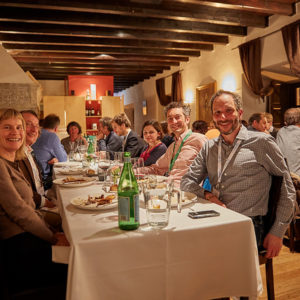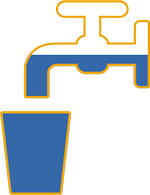Back to all articles
Non-grid Solutions for the Future of Urban Water Management Conference

Abe Noe-Hays, Rich Earth Institute co-founder, was recently invited to attend the Non-grid Solutions for the Future of Urban Water Management conference hosted by the Swiss Federal Institute of Aquatic Science and Technology (Eawag). Phoebe Gooding interviewed Abe about his experience:
Phoebe: What was the purpose of the conference and who attended?
Abe: The purpose was to think about non-centralized ways to manage water, including drinking water, gray- and blackwater, and stormwater. Since it was organized by Eawag, they had several representatives attending including Tove Larsen and Kai Udert. Other people who attended included a variety of engineers, scientists, policy specialists, and a World Bank representative. There were several wastewater engineers from Paris who are trying to figure out how to use urine diversion for their wastewater treatment plant, which is overburdened with ammonia.

Phoebe: What did you learn about urine diversion (UD) projects on an international scale and how does Rich Earth compare to UD projects in Europe?
Abe: To be clear there were no representatives from the Global South so it was North America and Europe, but what I learned is that people are still at it. They are still working diligently and making progress on urine diversion projects. Bjorn Vinneras is developing technology to use alkali to stabilize and dry urine as a concentration and treatment method. Tove and her collaborators are making progress on UD toilet design. Eawag is moving forward with their work removing pharmaceuticals and optimizing their urine processing technology. All of this was very encouraging to me.
Compared to the projects in Europe, we were the only ones at the conference doing a full-cycle UD project–collecting, transporting, treating, and applying. We had the only program that was actively developing methods and technologies for all the stages of the urine recycling loop, all the way to bringing fertilizer to the farmers to apply on their land.

Phoebe: What were your personal highlights of the conference?
Abe: My personal highlights were networking and connecting with other urine researchers and building relationships, getting to know them. It was nice having discussions over four different days in both formal and non-formal contexts. One evening I had a lovely, long dinner conversation with Kara Nelson (U.C. Berkeley) and Ed Clerico (Natural Systems Utilities) about the affect of ammonia on parasitic worm eggs. The whole conference was a great opportunity to connect with colleagues more deeply, exchanging information and ideas for possible future collaboration.
Another highlight was exploring integrative approaches in urban water management–looking at how society and technology have changed over time, how those changes enable new capabilities in water management, and how we can use these new capabilities to address graywater, blackwater, stormwater, and urine differently than we did before. This goes beyond just saying, “Let’s harvest urine and see what we can do with it,” to looking at how to integrate a variety of new approaches to water management, so not everyone is trying to solve their own specialized problems in a vacuum. Instead of just enhancing one aspect of water management, we can come up with a new set of strategies where people with expertise in different areas can collaborate and think bigger than we are used to doing with our own specific projects.


